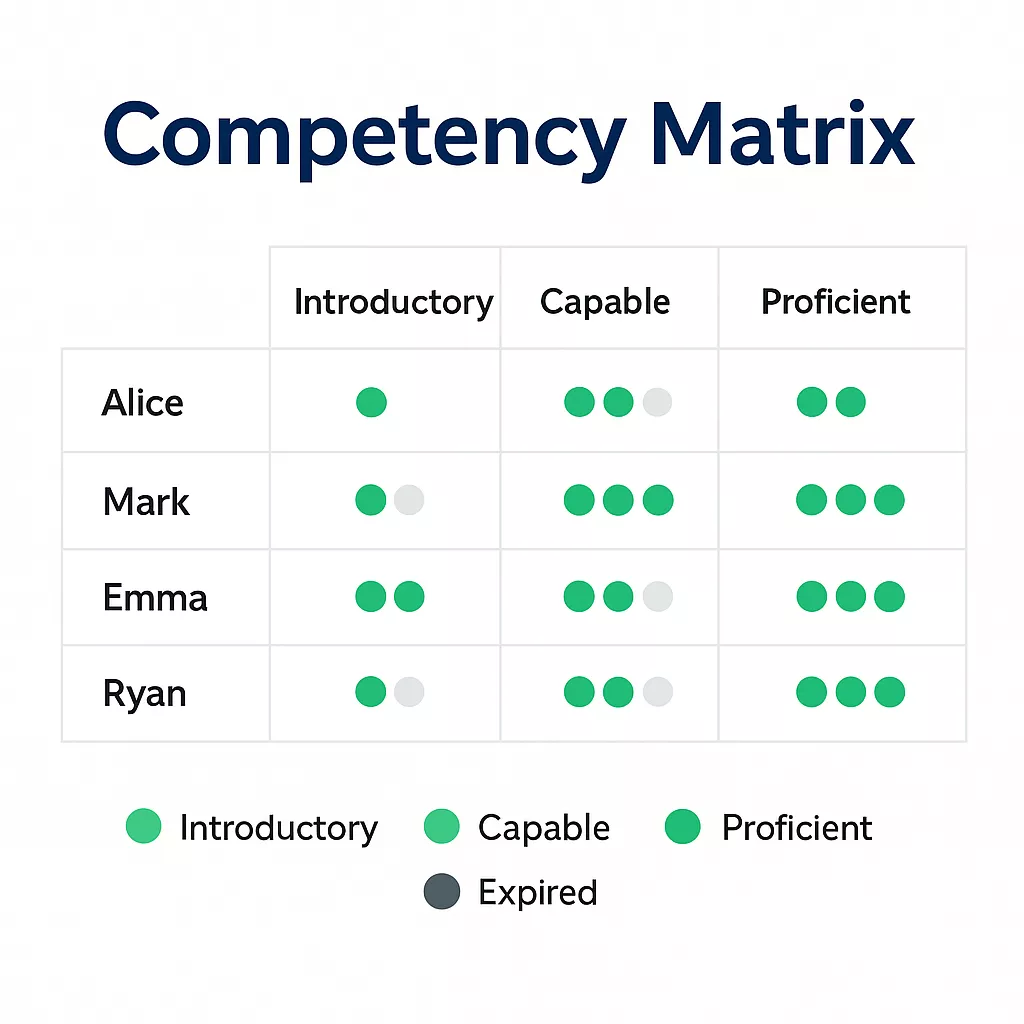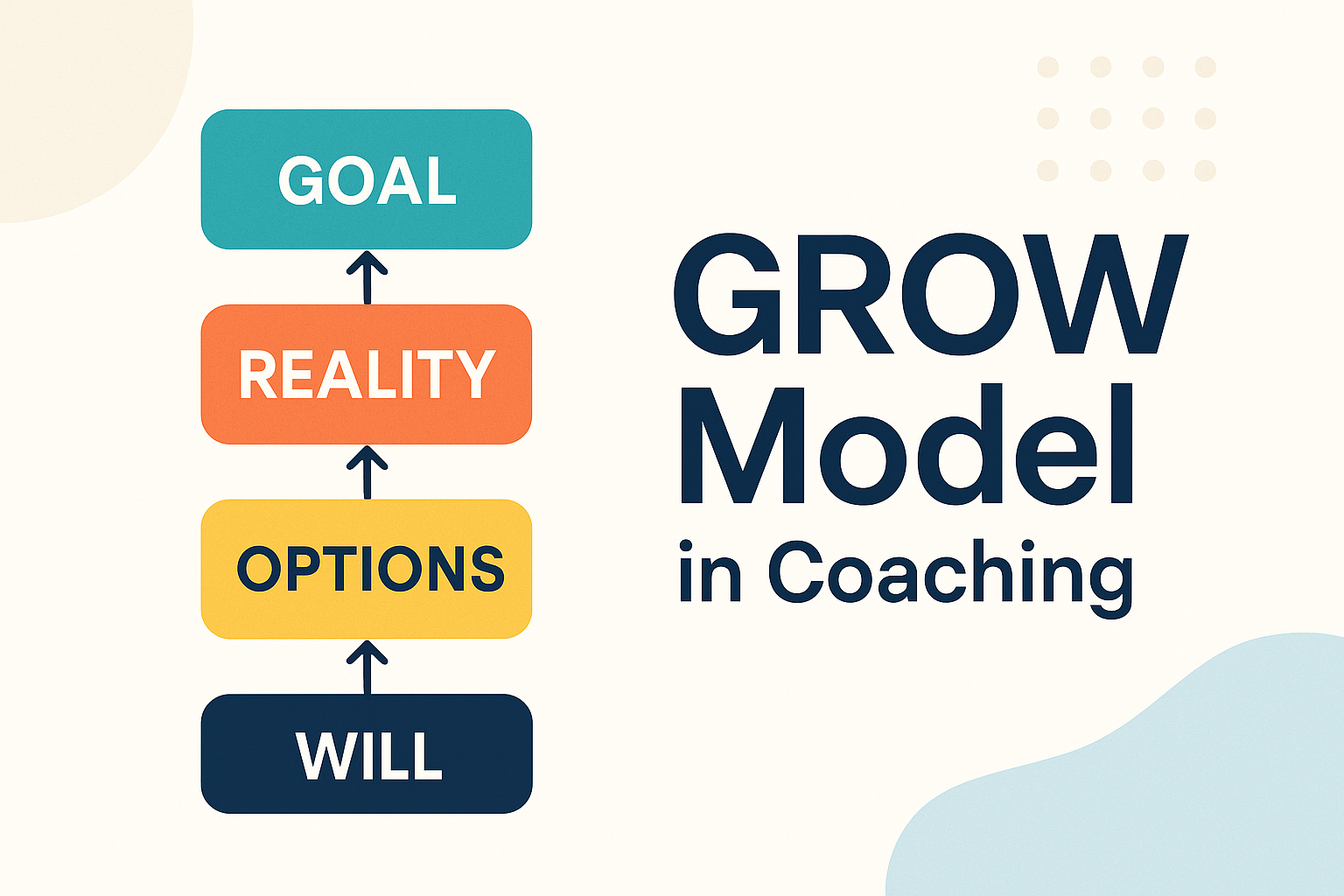by Venchito Tampon | Last Updated on September 26, 2025
Training mix is a structured framework that helps HR and Learning and Development (L&D) practitioners know what training program is required for each job role within an organization.
It is a widely used tool for visually presenting an overall scenario of employees’ training needs in either a simple table or digital dashboard—it maps employees against the required skills, certifications, or particular sources they must complete.
For HR practitioners, a training mix helps with HR audits and compliance checks. For L&D professionals, it helps track training progress and measure its effectiveness, as well as plan future programs based on the training gaps identified.
Contents
ToggleBenefits of a Training Matrix
There are many upsides to using training mix for SMEs and large corporations.
1. Clarity on employee development requirements
Having a training mix helps you clearly see what training is required for each employee based on their rank and role in the company. Having a good sense of this will help their managers or team leaders prioritize certain levels and types of career development—basically, allowing a more structured learning pathway for their professional growth.
2. Easy compliance tracking
For industries where compliance training is non-negotiable and critical for job performance, creating a training mix helps you to ensure the mandatory programs for tasks involving health and safety, or ISO standards, or any requirement from government agencies, including the Department of Health (DOH) or the FDA – Food and Drug Administration.
3. Reduces skill gaps and boosts productivity
Any job performance will have identified skill gaps from one level to the next. With a solid training mix, these skills gaps will be more intentional in designing targeted learning interventions that will help improve the individual capability of the target beneficiaries and the entire team where the individual belongs, as individual performance definitely affects the team as well.
4. Provides managers with real-time visibility
Managers typically have blind spots as to what their current team members’ needed capacities are to meet the current and future demands at work individually. With the training mix, it will be more visible for them to see the exact training status, completion rates, and the progress of each of their subordinates. This will assist them in making better staffing decisions and knowing what, when, and to whom they can delegate tasks with confidence and clarity.
Types of Training Matrices
You can choose from commonly used training matrices depending on your priority list – compliance, skill development, or holistic employee growth. Here are the types of training matrices that you can use:
1. Basic Training Matrix
Usually, just a table is used to plot job roles on one axis and training programs on the other. This gives you a quick look at which employees must complete certain training programs.
It is commonly applied to smaller organizations or teams requiring a straightforward look at their training requirements.
2. Competency Matrix
 Next on the list is a competence matrix, which goes beyond the traditional listing of training programs. This type of matrix actually connects training with the needed skills and competencies that each employee must perform in their roles. For instance, if you’re a sales manager, your matrix must include competencies such as consultative selling, sales leadership, and negotiation—each linked to a critical training program.
Next on the list is a competence matrix, which goes beyond the traditional listing of training programs. This type of matrix actually connects training with the needed skills and competencies that each employee must perform in their roles. For instance, if you’re a sales manager, your matrix must include competencies such as consultative selling, sales leadership, and negotiation—each linked to a critical training program.
3. Compliance Matrix
 As mentioned earlier, compliance training is mostly considered for highly regulated industries. So, having a compliance matrix will help companies define what mandatory training is required by industry standards or government law for each employee. This type of matrix also helps track renewal dates for each certification, so it doesn’t expire and avoids any risk of penalties.
As mentioned earlier, compliance training is mostly considered for highly regulated industries. So, having a compliance matrix will help companies define what mandatory training is required by industry standards or government law for each employee. This type of matrix also helps track renewal dates for each certification, so it doesn’t expire and avoids any risk of penalties.
4. Hybrid Matrix
 A hybrid matrix combines all three other types of matrices. It includes each employee’s compliance requirements, competency development, and progression paths. This, by far, is the most comprehensive option if you’ll be making your own training matrix – particularly used by larger organizations with complex, critical training needs.
A hybrid matrix combines all three other types of matrices. It includes each employee’s compliance requirements, competency development, and progression paths. This, by far, is the most comprehensive option if you’ll be making your own training matrix – particularly used by larger organizations with complex, critical training needs.
How to Create a Training Matrix
The meat of this guide is this step-by-step process for creating your own training matrix based on the preferred type of matrices we mentioned earlier. Let’s examine each of these steps in depth.
1. Identify roles and responsibilities
List all the job roles in your organization—if you work in a large corporation, this list can be completed in seconds with readily available data.
Then, clarify what’s responsible so you can match needed training requirements to specific tasks associated with each role. For instance, a technician needs safety and equipment training (among many other trainings), while a manager may just need leadership and people management programs.
2. Define required training per role
Assess what training each job role must complete. This includes technical (hard skills), soft skills, compliance certifications, or specific onboarding sessions. The objective is to ensure that every employee has a clear pathway as to what training must be completed to perform effectively.
3. Determine frequency and renewal cycles
Define the frequency for each training. Is it one-time, renewals, or does it need regular refreshers? For instance, some safety trainings are valid for just one year, while leadership training could be optional, but fundamentally important to conduct every year.
Documenting these training cycles will help your team prevent lapses, leading to more employees staying compliant, upskilled, and updated.
4. Choose a format
Have a concrete plan for how you will present and manage the training matrix. If it’s a small team, you may use a simple Excel or Google Sheets table. If you’re into large corporations, you probably have a software or dashboard you can use – particularly some learning management systems (LMS) or HR software that can help you automate reminders, and effectively track training completions and generate instant reports.
Fundamentally, the correct training format highly depends on your team size, industry requirements, and training and reporting needs.
5. Assign owners for updates and monitoring
The crucial step of creating a training matrix is to assign accountability and responsibility for keeping the matrix updated as much as possible. This could be a primary task of a department manager’s HR and L&D specialist. Having clear owners who would take care of the training data to make sure it is updated regularly – i.e., no expiring certifications are flagged will help the matrix be a good, reliable tool for decision making for training purposes and organizational efficiency in operations.
The Author
Venchito Tampon
Venchito Tampon is a Filipino motivational speaker, Business Consultant, Founder and Lead Corporate Trainer of Rainmakers Training Consultancy. He trained and spoken in over 250+ conventions, seminars, and workshops across the Philippines and internationally including Singapore, Slovakia, and Australia. He has worked with top corporations including SM Hypermarket, Shell, and National Bookstore.
He also founded SharpRocket, a digital marketing company, Blend N Sips, eCommerce for coffee supplies, and Hills & Valleys Cafe, a local cafe with available franchising.
He is a certified member of The Philippine Society for Talent Development (PSTD), the premier organization for Talent Development practitioners in the country.
An active Go Negosyo Mentor (of Mentor Me program) and a business strategist and consultant.
You may also like
Learning and Development Plan: A Complete Guide
Learning and Development Plan (L&D plan) is a structured flow and framework…
GROW Model in Coaching
GROW Model is a globally known coaching framework for structuring conversations…



